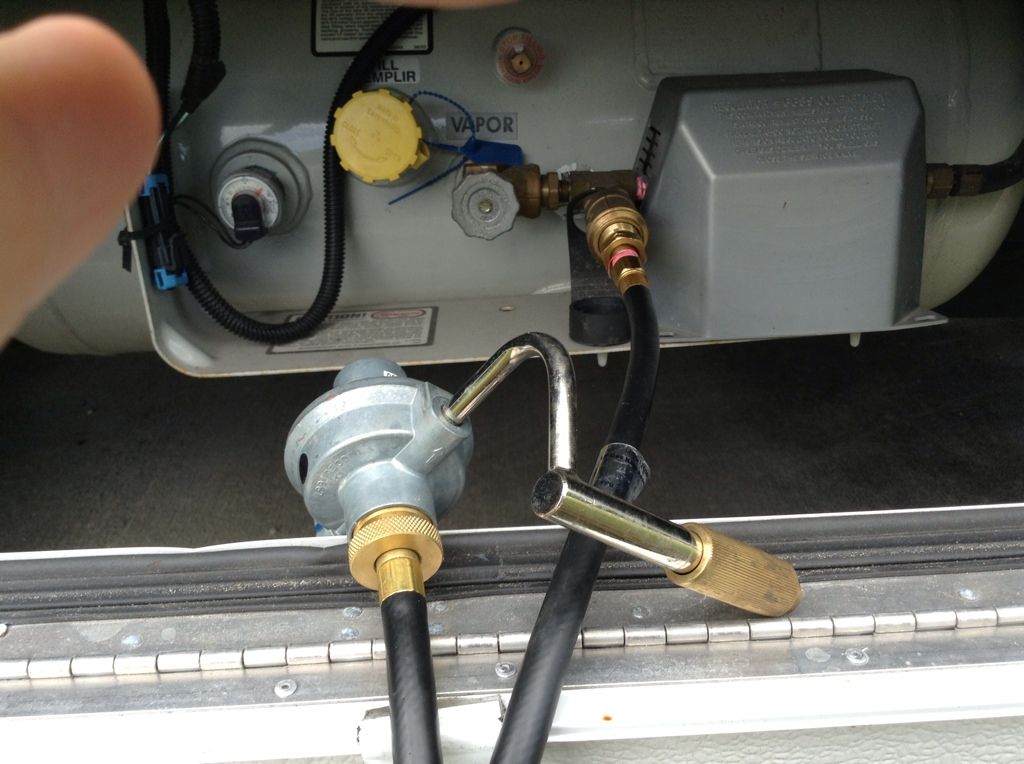Effy wrote:
I have a small foldable LP grill we use and either have to resort to small bottles or a 20 pounder. We also have a campfire in a can. Again they use small bottles or the 20#. Is there an easy way to attach an extension to the on board tank on the MH? If so, what do I need, what's the process and how long of an extension can I add on? Not sure if there is a loss in pressure over distance etc. Thanks
Yep, but where you hook up is dependent on whether the grill/campfire unit has a regulator or not. If they have regulators, you have to hook before the tanks regulator, but if they do not have regulators - you need to hook after the tanks regulator. And you can get the extension lines from any RV dealer or a Propane dealer will make them up for you. Usually the later is priced much more reasonable. Considering your small grill can use the small 1 pound canisters, it probably has a regulator, so the extension would be hooked pre tank regulator.
